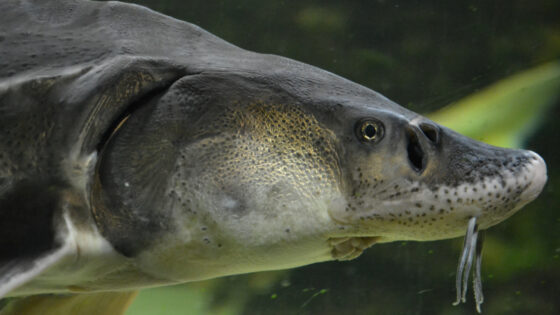Tumolo, B.B., L.K. Albertson, W.F. Cross, M.D. Daniels, and L.S. Sklar, 2019. Ecosphere 10(5):e02734.
https://doi.org/10.1002/ecs2.2734
This is an open access article under the terms of the Creative Commons Attribution License, which permits use, distribution and reproduction in any medium, provided the original work is properly cited.
Abstract
Ecosystem engineers transform habitats in ways that facilitate a diversity of species; however, few investigations have isolated short‐term effects of engineers from the longer‐term legacy effects of their engineered structures. We investigated how initial presence of net‐spinning caddisflies (Hydropsychidae) and their structures that provide and modify habitat differentially influence benthic community colonization in a headwater stream by conducting an in situ experiment that included three treatments: (1) initial engineering organism with its habitat modification structure occupied (hereafter caddisfly); (2) initial habitat modification structure alone (hereafter silk); and (3) a control with the initial absence of both engineer and habitat modification structure (hereafter control). Total invertebrate colonization density and biomass was higher in caddisfly and silk treatments compared to controls (~25% and 35%, respectively). However, finer‐scale patterns of taxonomy revealed that density for one of the taxa, Chironomidae, was ~19% higher in caddisfly compared to silk treatments. Additionally, conspecific biomass was higher by an average of 50% in silk treatments compared to controls; however, no differences in Hydropsyche sp. biomass were detected between caddisfly treatments and controls, indicating initially abandoned silk structures elevated conspecific biomass. These findings suggest that the positive effects of the habitat modification structures that were occupied for the entirety of the experiment may outweigh any potential negative impacts from the engineer, which is known to be territorial. Importantly, these results reveal that the initial presence of the engineer itself may be important in maintaining the ecological significance of habitat modifications. Furthermore, the habitat modifications that were initially abandoned (silk) had similar positive effects on conspecific biomass compared to caddisfly treatments, suggesting legacy effects of these engineering structures may have pertinent intraspecific feedbacks of the same magnitude to that of occupied habitat modifications. Elucidating how engineers and their habitat modifications differentially facilitate organisms will allow for a clearer mechanistic understanding of the extent to which animal engineers and their actions influence aspects of community organization such as colonization.



